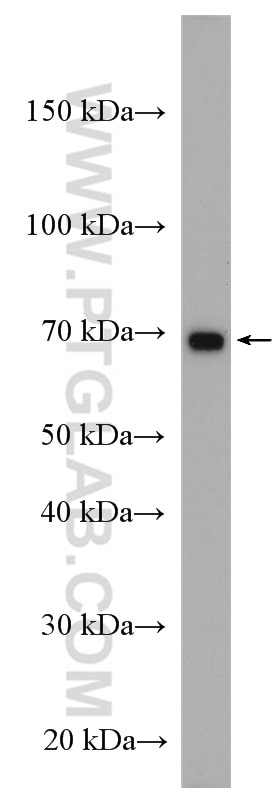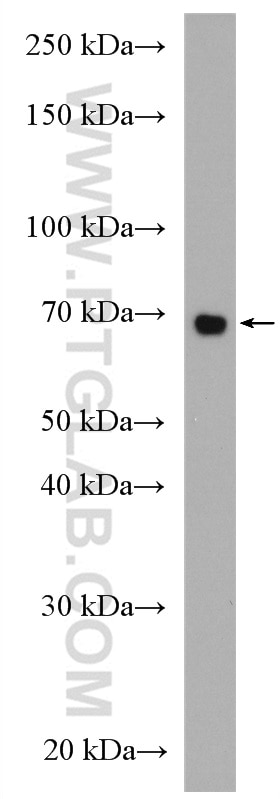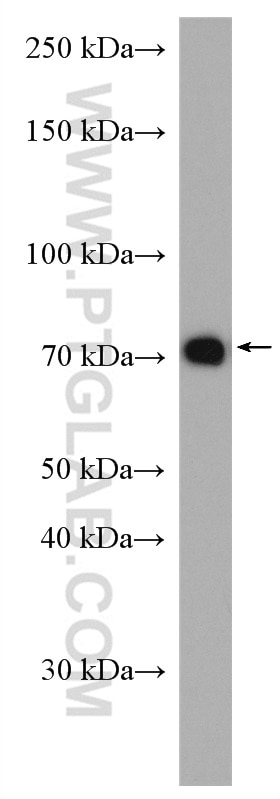Tested Applications
| Positive WB detected in | Jurkat cells, K-562 cells, Raji cells |
Recommended dilution
| Application | Dilution |
|---|---|
| Western Blot (WB) | WB : 1:500-1:2000 |
| It is recommended that this reagent should be titrated in each testing system to obtain optimal results. | |
| Sample-dependent, Check data in validation data gallery. | |
Product Information
27377-1-AP targets IL-2RG in WB, ELISA applications and shows reactivity with human samples.
| Tested Reactivity | human |
| Host / Isotype | Rabbit / IgG |
| Class | Polyclonal |
| Type | Antibody |
| Immunogen | IL-2RG fusion protein Ag26388 Predict reactive species |
| Full Name | interleukin 2 receptor, gamma (severe combined immunodeficiency) |
| Calculated Molecular Weight | 369 aa, 42 kDa |
| Observed Molecular Weight | 64-70 kDa |
| GenBank Accession Number | BC014972 |
| Gene Symbol | IL2RG |
| Gene ID (NCBI) | 3561 |
| RRID | AB_2880857 |
| Conjugate | Unconjugated |
| Form | Liquid |
| Purification Method | Antigen affinity purification |
| UNIPROT ID | P31785 |
| Storage Buffer | PBS with 0.02% sodium azide and 50% glycerol , pH 7.3 |
| Storage Conditions | Store at -20°C. Stable for one year after shipment. Aliquoting is unnecessary for -20oC storage. 20ul sizes contain 0.1% BSA. |
Background Information
The interleukin-2 receptor (IL-2R) is a heterotrimeric receptor consisting of three subunits, alpha (IL-2RA), beta (IL-2RB), and gamma (IL-2RG). IL-2RG, also known as CD132, is an important signaling component of many interleukin receptors, including those of interleukin -2, -4, -7 and -21, and is thus referred to as the common gamma chain. Mutations in the gene of IL-2RG cause X-linked severe combined immunodeficiency (XSCID), as well as X-linked combined immunodeficiency (XCID), a less severe immunodeficiency disorder.
Protocols
| Product Specific Protocols | |
|---|---|
| WB protocol for IL-2RG antibody 27377-1-AP | Download protocol |
| Standard Protocols | |
|---|---|
| Click here to view our Standard Protocols |







